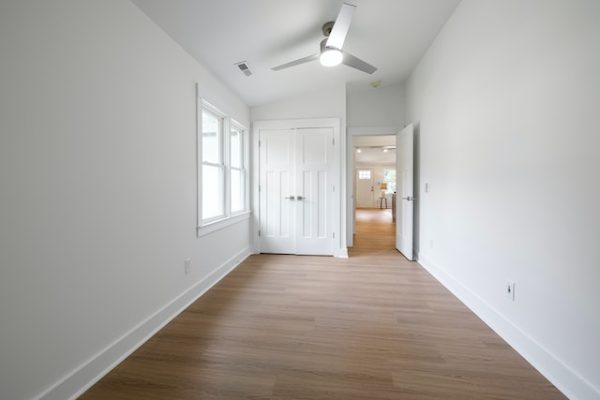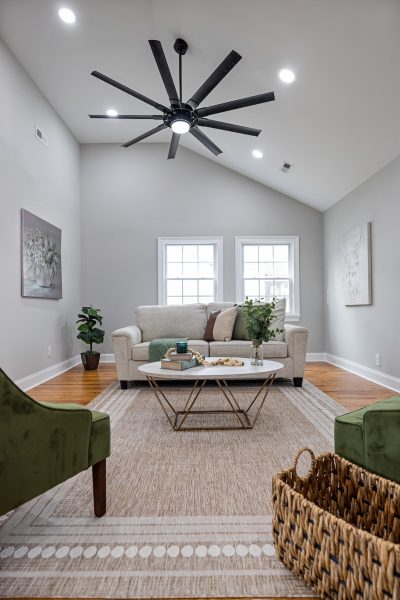Many people don’t pay much attention to ceiling fans, even though they can help keep rooms temperate throughout the year and add more pizazz to ceilings.
When you go to buy new fans for your property, you may not expect the breadth and depth of variety that you’ll find available to choose from.
More types of ceiling fans are on the market than most of us realize. Here are some to consider.
Standard
Most people can use a standard ceiling fan in their homes. As the name suggests, this is the typical type of fan on the market, which comes in all sorts of options to suit different sizes, colors, styles, etc. You might like to buy a chandelier ceiling fan for your lounge room, a simple wooden-look product for your office, or choose brightly-hued options, silver or brushed nickel choices in the bedrooms, or anything in between. You should be able to easily find affordable fans to suit your property’s décor style and architectural type.
Many standard fans have lights built into them, which is handy, and they usually have four or five blades but can be customized according to your desires. Standard fans usually have a downrod in them, too, a metal pipe connecting the mounting brackets to the motor housing. Standard fans also suit both flat and sloped ceilings, so you’ve covered in that way.
Dual Motor or Multi-Head
The dual-motor product is a different type of product you might see when you go fan shopping. Looking a bit like a mythological two-headed creature, these fans have two distinct motors. Each motor sits on a horizontal rod that is then attached to a central motor housing unit. If you want targeted air-flow directioning, this will suit your needs.
Each rod has its own adjustable fan head, meaning you get twice the airflow from a single, centrally-located fan base, and each fan head can even be set to its own speed. This type of dual-motor fan is typically used in vast spaces in residential homes when a wide area needs covering.
Another multifunctional option worth considering is the multi-head ceiling fan. This one has two (or sometimes more) fans built in, and they function like wall-mounted units that rotate around a center point instead of having larger blades that move parallel to the ground. These fans are compact, which is handy in many properties, and they give out a retro vibe, too, which might suit your decorating tastes.

Low-Profile
Another product suitable for smaller spaces is the low-profile fan. In particular, this is perfect for rooms with lower ceilings than the norm. These fans are often used in attics and basements, for example. Also called “hugger” or flush-mount ceiling fans because they sit closer to the ceiling, these products are designed quite differently from standard ones. Instead of having a downrod, they get installed right onto the mounting bracket, which saves space and means they can therefore sit above the recommended floor clearance in lower-ceilinged rooms.
While some people buy smaller ceiling fans like this to keep the room looking aesthetically uncluttered, they’re more popular for compact spaces. Keep in mind that you do get less air movement because the fan blades are closer to the ceiling, but you’ll still enjoy a cooler room once they’re installed than if you had nothing at all.
Remote Control
Something that used to be rare but is more the norm today is ceiling fans that can be operated by remote control. These units enable us to change the speed of fans or turn them on or off from the comfort of our sofas and the like but are also incredibly helpful for anyone who has mobility or height concerns with standard non-remote-operated products. Alternatively, you might need one of these types of fans for rooms with soaring ceilings.
Damp and Wet
Often, we like to use ceiling fans in outdoor areas as well as internal ones. For example, you may want to install a fan in a sunroom, covered porch, patio, deck, or another area of your home that is only semi-enclosed or otherwise open to the elements. If so, it’s best to pick out a damp or wet product that’s made to withstand humidity and indirect precipitation.
These products boast motors that won’t get damaged by moisture or humidity, and the blades are all-weather designs, too, to avoid warping over time due to the elements.
Other fan types to browse when you’re ready to buy include smart ceiling fans that can be controlled by apps on your tablets or smartphones, energy-efficient products, and fans powered by direct current motors. Consider your needs and the style of your home before you make a purchase, and think long-term, too, since fans generally last a long time.


